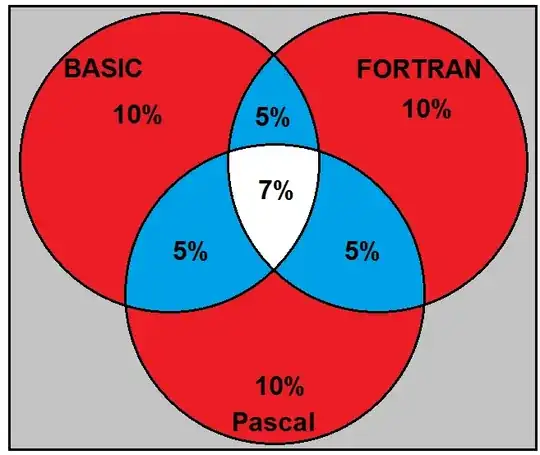At one school, three computer languages, Basic, FORTRAN, and Pascal are taught. Suppose that for each language 27% of the students know that language, for each pair of languages 12% of the students know that pair of languages, and 7% of the students know all three languages. How many of the students do not know any computer language?
I am not sure how to start this but I think I use inclusion-exclusion method?
